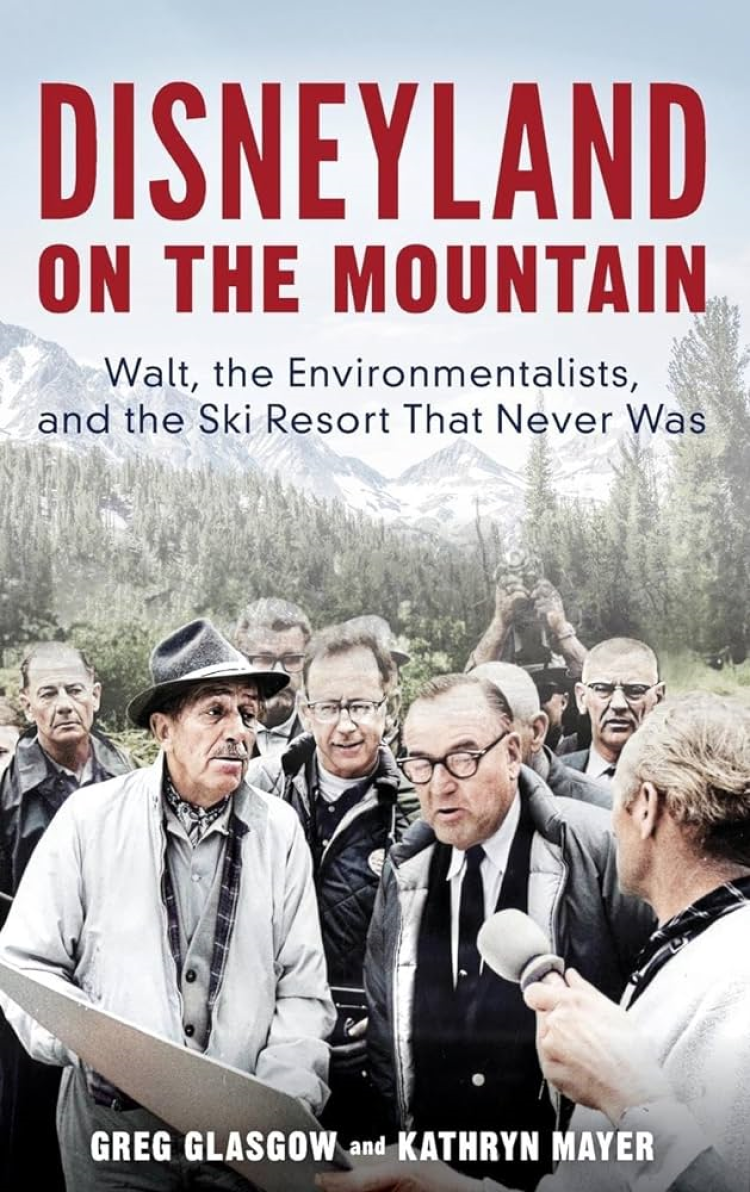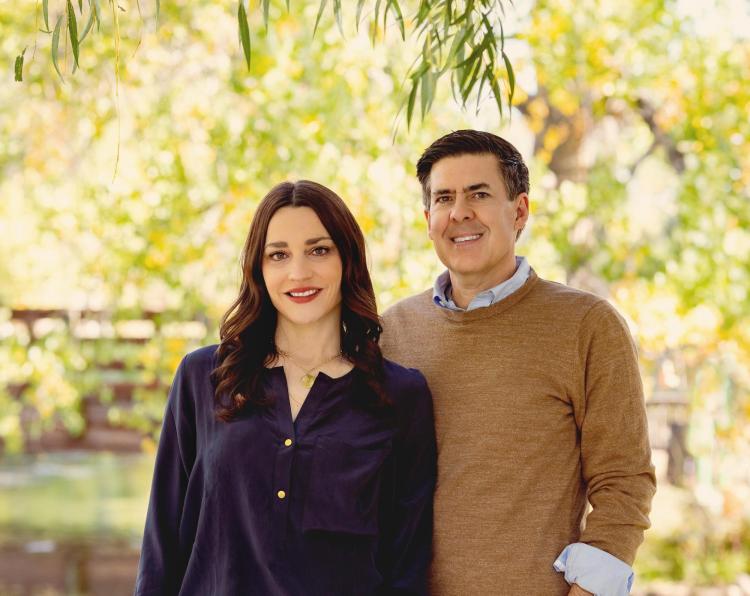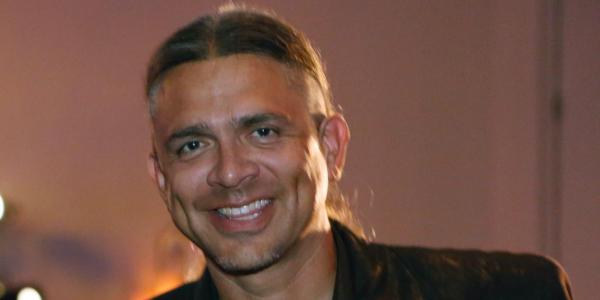CU alum and his wife write book about the little-known story of Disney’s plan build a mountain ski resort in California
Celebrating its 100th anniversary today, The Walt Disney Co. is an entertainment powerhouse, known for its movie studios, its retail stores, its cruise ship line and most widely for its theme parks.
One chapter in the Disney story is much less commonly known today, however. Walt Disney once planned to create a premiere ski resort in Mineral King valley in central California. When Disney announced his plans to great fanfare in 1965, the project had the backing of the state’s powerful political and business establishment, skiers and, initially, even the Sierra Club.
And yet, it was not to be.
University of Colorado Boulder alumnus Greg Glasgow (MEngl’99) first heard about the ill-fated ski resort in 2018, when he and his wife, Kathryn Mayer, were touring the Walt Disney Family Museum in San Francisco. The ski project warranted a brief mention on a big display showing the major events in Disney’s life.

Walt Disney’s plans in the 1960s to build a premiere ski resort in Mineral King valley in Central California is a little known chapter in the company’s 100-year history. The ill-fated ski resort is the subject of a new book, Disneyland on the Mountain, by CU alum Greg Glasgow and his wife, Kathryn Mayer.
Things might have ended there, with a brief acknowledgement, before moving on—except that Glasgow and Mayer noticed that Willy Schaeffler, a renowned Olympic ski coach who also served as head ski coach for the University of Denver, was hired by Walt Disney to help develop the ski village and mountain resort. The couple were very familiar with Schaeffler, as they both had worked in communications for the University of Denver.
“So, that’s a name (Schaeffler) that we immediately recognized, and it got us interested in looking into things,” says Glasgow, who, along with Mayer, is a veteran journalist.
“And then we discovered this whole environmental battle that went along with (the ski resort), and the Supreme Court case that happened, and we couldn’t believe the story had never been fully told before.”
The result of the couple’s multi-pronged efforts—involving about five years of research, interviewing sources and writing—culminated in the recent release of their first book, Disneyland on the Mountain: Walt, the Environmentalists, and the Ski Resort That Never Was.
Recently, Colorado Arts and Sciences Magazine spoke with Glasgow about his book, discussing what he discovered in his research and how the book came together. His answers have been lightly edited and condensed for space.
Question: If you would, set the stage for what prompted Walt Disney to consider opening a ski resort. And, this wasn’t just going to be any ski resort, correct?
Glasgow: Disney was the chairman of pageantry at the 1960 Winter Olympics, which were held in California, and he helped create the modern opening ceremonies and closing ceremonies. Things like working on entertainment for the athletes, bringing up a lot of celebrities from Hollywood and things like that.
Walt was already a skier at the time, and he really liked the sport. Disneyland had just opened, and I think Walt’s mind was already working on: What can I do next? How can I take the lessons of Disneyland in terms of entertaining large groups of people in this kind of live, experiential setting, mixed with what happened at the Olympics, plus his love of the sport.
And then meeting Willy Schaeffler, whom Walt met at the Winter Olympics in 1960, where Willy designed all of the downhill courses—I think all of those things together got his wheels turning and thinking (a ski resort) would be his next big thing to do. …
Walt made a point early on of saying, ‘This is not going to be an amusement park; it’s not going to be Disneyland.’ But being Disney, they did think, ‘We need some sort of entertainment that people are used to from the company.’ So, they created this band of musical bears that they said came out of the mountains and learned how to play instruments and sing, and they would entertain guests.
And that, of course, later became the Country Bear Jamboree that people probably know from the Disney parks, but that started off as an attraction developed for Mineral King.
Question: When Disney announces he’s won a concession with the U.S. Forest Service to develop Mineral King as a ski resort, the news is received very positively by the state’s business and political interests. When did things start to change?
Glasgow: A lot of our research came out of newspaper stories from the time—this was the end of 1965 when it was announced—and there was a lot of positivity and excitement. Governor (Pat) Brown was very much behind it. The photo on our book cover was from a press conference in 1966, where he announced the state was working with the federal government to expand the road into the area. All of the politicians were for it, all of the economic boosters and all of the business owners and skiers.

CU alum Greg Glasgow and his wife, Kathryn Mayer, both veteran journalists, are the authors of a recent book about Walt Disney’s ill-fated plans in the 1960s to build a ski resort in central California.
There were a small group of environmentalists who were worried about it, but really, when things were first announced, the overall sentiment was very positive. …
It was interesting to chart the course of things. So, the Forest Service put this area up for a bid for a long-term lease, and Walt was one of six different companies that bid to develop the area, and Walt won the bid.
And then, unfortunately, Walt died just a year after Disney won the bid, and that’s when the momentum started to shift a bit. Disney (company) soldiers on with the project, and they made a point of saying, ‘We want to fulfill this project for him; in his honor, we want to make this project happen.’ …
Once the Sierra Club filed its first lawsuit against the project, which happened in the summer of 1969, I think that was really the death knell in terms of it happening. The following April was the first Earth Day, and Disney’s timing was bad in that they encounter a growing environmental movement and this sentiment of, ‘We don’t want every beautiful area in the country to be developed.’
So, you see a shift in the newspaper coverage (from pro-development to anti-development) … and then a lot of politicians from the other side got involved and started drafting these measures to save Mineral King or put the area in Sequoia National Park.
[Editor’s note: An extended court battle over Mineral King made its way to the U.S. Supreme Court, with a ruling that allowed the Forest Service to continue with its plan to issue a long-term lease for the area’s development. However, in 1978, Congress passed an omnibus bill that put Mineral King into Sequoia National Park and protect it from development.]
Question: Whom did you speak with for your book?
Glasgow: We were able to connect with Michael McCloskey, who was the head of the Sierra Club at the time this is all going down, and he still has a lot of great memories and was able to walk us through a lot of what was happening at the time and how it fit into the bigger picture of what that organization was all about.
We also talked to a great woman named Jean Koch, who was a Mineral King cabin owner. She was one of about 60 people who had these summer cabins at Mineral King and she was, of course, very concerned about what this (ski resort) project was going to mean for that cabin community. …
She unfortunately passed away back in April of this year, at age 100. Even so, when we spoke with her, her memories were really sharp and she was able to bring to life her passion for that area and her great memories.
We talked to three or four people on the Disney side, former employees who were involved with the project or in some cases, children of people who were involved with it.
Question: Did corporate Disney have any reaction when you asked them for contacts or resources and let them know you were planning on writing a book about Mineral King?
Glasgow: We really just reached out to Disney about artwork, mainly to say we’d love to use some of their concept drawings and different photos they had of and around the project. We went back and forth with them for a while, and they were slow to respond. This was during COVID and their archive was closed. …
Mineral King is not some deep, dark secret they have. As we talk about in the book, they even have a few winking references to it in some of their other projects and movies they’ve done. There is an animated Christmas special where Mickey and Donald and Goofy go up to Mineral King to go skiing. …
For our part, we certainly don’t paint Disney as any kind of villain in the book. We wanted to be fair to both sides.
Question: Was there anything you learned during your research and speaking with sources that surprised you?
Glasgow: One thing we weren’t aware of is that Walt, really all of his life, had been this big nature lover and conservationist. He did this whole line of wildlife documentaries in the 1940s, 1950s and 1960s called the True Life Adventures series, which were wildlife documentaries that people would see in the theaters or on his Sunday night show, that kind of helped introduce the whole world of nature and animals to people.
That was really a big part of him. He had won a lot of awards from different groups, including the Sierra Club, which actually gave him an honorary lifetime membership at one point. …
Another interesting thing we talked about in the book was that the Sierra Club, back in the 1940s, had actually recommended Mineral King as a good area to build a ski resort. They had opposed development in another area, so they went out looking for alternatives that they could present, and they came across this area (Mineral King) and said, ‘This area looks great for skiing.’
So, there was this weird connection where, at one point, they said, ‘This is a great area for development’ and then (later) they’re saying, ‘Don’t develop it.’
That was one of the battles within the Sierra Club itself, with some of the older members saying, ‘Well, gee, we already said this was OK, now we’re going back on our word and saying it’s not.’
Question: You received your undergraduate degree in journalism from Colorado State University, and then earned a master’s degree from CU Boulder. Do you feel like that education helped prepare you to write this book?
Glasgow: The best thing about the CU creative writing program is that you got to immerse yourself in writing because of the assignments, and you’re with a bunch of really talented writers that keep setting the bar higher and higher while you’re honing your craft.
There were a lot of fiction classes. But what was cool about our book is, we tried to use a lot of characters and storytelling, so a lot of the fiction techniques that I worked on during my grad school career really came to bear on this project.
Did you enjoy this article? Subcribe to our newsletter. Passionate about English? Show your support.



